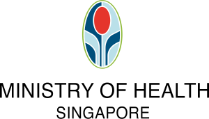8-day road trip itinerary in Canadian Rocky Mountains: Scenic views, easy hikes and brilliant alpine lakes

Published on
12 Sep 2022
Published by
The Straits Times
ALBERTA, Canada – The mountains get closer every day.
In Vancouver, the western Canadian city I fly into, icy peaks backdrop the harbour. I spot them again while my domestic flight descends over Calgary, a smaller city known as the gateway to the Canadian Rockies mountain range. While driving towards the resort town of Banff, these peaks beckon in the distance.
Last October, Singapore Airlines (SIA) relaunched direct flights from Singapore to Vancouver after suspending them in 2009, ending the airline’s more than 20 years of flying to Canada. The Singapore-Vancouver-Seattle route was meant to run four times weekly until February, but got so much demand that SIA now runs separate, direct flights to each destination.
Vancouver is a laid-back city, the sort that makes Singaporeans dream of a life abroad. With nature at its doorstep, locals decamp to its outskirts to kayak, camp, hike and ski on weekends.
Winters are mild, rarely falling below 0 deg C, and summer highs peak at a pleasant 22 deg C. Bring out the boots, as well as the sharp blazer at the back of your closet that gets passed over in blazing tropical heat.
Spend a few days in Vancouver, then head into the mountains with this eight-day Canadian Rockies road trip itinerary. Pare it down to just under a week if you must, or leave time to linger. Like the locals who moved to Canmore to be closer to nature, you might find yourself not wanting to return.
Canmore
The quickest way to the Canadian Rockies is to fly into Calgary, about 90 minutes from capital Vancouver. From there, the mountain town of Canmore is a 75-minute drive away.
There are more scenic spots in the area than one can reasonably cover in a single trip, so choose based on how much driving and walking you want to do. From Canmore, several lakes surrounded by easy hiking trails are about a 30-minute drive away.
My pick is Vermilion Lakes, a trio of lakes that reflect the wedge-shaped Mount Rundle. Go at sunset to photograph the alpenglow, where the mountain glows red near the horizon, or linger through the afternoon on one of several docks. Nearby, the Fenland Trail is a family-friendly 2km hike through a pine forest that takes about an hour.
Two Jack Lake and Lake Minnewanka are other popular alternatives. Pack a picnic lunch – supermarkets or bakeries such as Rocky Mountain Bagel Company (https://str.sg/wKSe) have good takeout options.
Warm up after a brisk day in the outdoors at Rocket Pie Pizza (https://str.sg/wKSn), where the crust hits the sweet spot between chewy and moist. My formaggi pizza (C$26 or S$28) comes with five types of cheese on a garlic confit base and is perfect with a touch of honey and chilli oil.
Canmore is known as “Banff for locals”, where food and accommodation are generally cheaper than in the more touristy and well-known town of Banff. Spend about two nights in Canmore or longer if you are using it as a base to explore the sights around Banff, about an hour’s drive away.
Many hotels and even Airbnb apartments come with hot tubs, a treat after a long, cold day of hiking. I stay at Lamphouse Hotel by Basecamp, which had modern and comfortable rooms and a communal hot tub with a view of the mountains. For about $130 a night, it is good value.
Banff
From Canmore, drive north to Banff, probably the best-known resort town in the province of Alberta. Give yourself at least three days to visit the iconic alpine lakes that adorn the covers of travel guidebooks and tourism brochures.
These glacier-fed lakes, which include Lake Louise, Moraine Lake and Peyto Lake, get their brilliant turquoise colour from rock flour – finely powdered rock formed by erosion that is washed into the lake and suspended in the water. Sunlight reflecting off these particles gives these lakes their vibrant hues and make them more well-known than the lower-elevation ones around Canmore.
Of these, Lake Louise is the easiest to get to. It is located just a couple of minutes from the carpark and open year-round.
In comparison, the Peyto Lake viewpoint requires a 10-minute uphill climb, while the road leading to Moraine Lake is open only between June and October due to avalanche risk. Check exact dates (https://str.sg/wKS7) before setting out.
Because of its accessibility, Lake Louise is perennially crowded, so come early for a parking spot and the best chance at photographing an empty lake.
Or splash out on a stay at the Fairmont Chateau Lake Louise (https://str.sg/wKS8), located next to the lake. It will set you back about C$1,100 a night, but you will get to enjoy the view in relative solitude when the day trippers have left.
Take a leisurely paddle on a canoe in summer or whizz around an ice-skating rink in winter. The lake is also surrounded by hiking trails for all abilities.
For a quieter and more affordable lakeside stay, consider Emerald Lake Lodge (https://str.sg/wKSB). It is technically outside Banff, located within Yoho National Park in the province of British Columbia, but just a 35-minute drive from Lake Louise.
Rooms are old but well-kept, with cosy touches. Each one, for instance, comes with a fireplace set up with logs, kindling, matches and a pair of metal skewers to toast marshmallows. All you have to do is strike a match. Staff can also get a fire going at the resort’s fire pit, so you can stay warm while taking in the lakeside view. Rates start at about C$180.
For more information and places to visit, go to https://str.sg/wKSW.
Jasper
Spend a day driving the Icefields Parkway, a 230km stretch of highway from Jasper to Lake Louise that makes geography textbooks come to life. Keep your eyes peeled for the next glacier, waterfall, lake and hiking trail, a herd of moose grazing or the odd bighorn sheep by the side of the road.
A quick photo stop will suffice at many sights, but leave extra time for activities such as the Columbia Icefield Adventure (https://str.sg/wKS2), located about an hour south of Jasper.
The experience includes visiting the Athabasca glacier on an all-terrain ice explorer vehicle and entrance to the glass-floored skywalk, an observation platform that extends dizzyingly over the valley below. Prices vary based on dates, but generally range from C$77 to C$115.
Other impressive sights include the Athabasca Falls, Bow Lake and Crowfoot Glacier. For a smooth drive, check out the highlights and plan your route (https://str.sg/wKS6) before starting out.
Jasper is a quieter, more laid-back town than Banff or Canmore, but its surrounding nature has more than enough to keep you occupied.
Spend about three nights here, which lets you fit in a few hikes such as the Valley of the Five Lakes loop, which spans 4.5km. Do not believe the websites that tell you it will take two hours – budget at least three as you will be stopping for photos or to soak in the views.
Many restaurants in Alberta serve wild game such as elk and bison, and you can try this at Syrahs of Jasper (https://str.sg/wKSu), where the plating is fancy but the vibe relaxed.
Order the wild game meatballs (C$19) made of elk, bison and boar, or the bison ribeye (C$53) which tastes almost like a beef steak, but with a touch more gaminess in the fat. Come on a Sunday for 30 per cent off the bill.
Next door, the Jasper Liquor Store and Wine Cellar (https://str.sg/wKSL) stocks a dizzying array of spirits and craft beers, many from local distilleries and breweries. The staff picks are on point and my brown paper bag heaves with maple whiskey, coffee cocktails, pastry stouts and more. Could this holiday get any better?
Tips
Download ArriveCAN (https://str.sg/wKSb), Canada’s travel and public health app, to submit your vaccination certificate and travel details. You may need to show this while checking in for your flight to Canada.
Singaporeans travelling to Canada by air will need an Electronic Travel Authorisation (https://str.sg/wKSE), which costs C$7.
Visitor centres are a trove of information, and staff can advise on anything from road conditions to wildlife spotting. They are good for a rest stop too, as toilets are clean and well-maintained.
Download offline Google maps as some areas, especially along the Icefields Parkway, do not have mobile reception. This also saves you from having to rent a GPS system. Follow these instructions so you can navigate offline (https://str.sg/wKSa).
Add 30 to 60 minutes to drive times stated on Google Maps for a more leisurely journey that includes time for toilet, snack and photo stops.
Get cheaper car rentals from Turo (https://str.sg/wKSR), a car-sharing marketplace that works like Airbnb for vehicles. I rent a Kia Forte for 10 days and save about 30 per cent compared with major car rental companies.
Source: The Straits Times © Singapore Press Holdings Limited. Reproduced with permission.
ALL views, content, information and/or materials expressed / presented by any third party apart from Council For Third Age, belong strictly to such third party. Any such third party views, content, information and/or materials provided herein are for convenience and/or general information purposes only. Council For Third Age shall not be responsible nor liable for any injury, loss or damage whatsoever arising directly or indirectly howsoever in connection with or as a result of any person accessing or acting on any such views, content, information and/or materials. Such third party views, content, information and/or materials do not imply and shall not be construed as a representation, warranty, endorsement and/or verification by Council For Third Age in respect of such views, content, information and/or materials.







